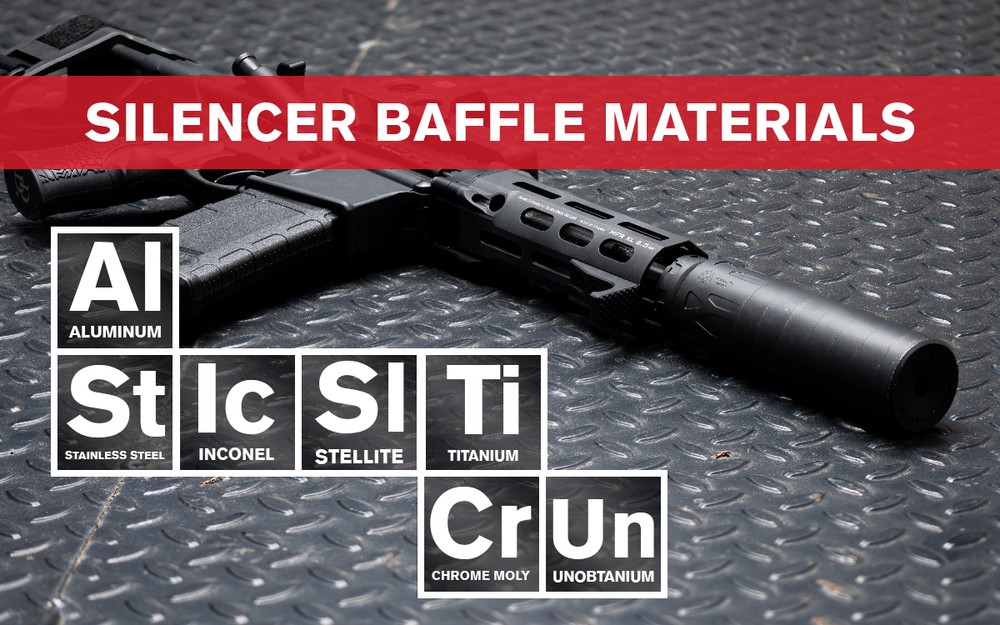

We’ve all heard that it’s what’s on the inside that counts. And, in terms of silencers and their silencer baffle materials, it’s definitely the truth! In this article, we’re going to spend some time covering the main materials used in baffle designs, and the advantages and disadvantages of each.
The Materials of Suppressor Baffles
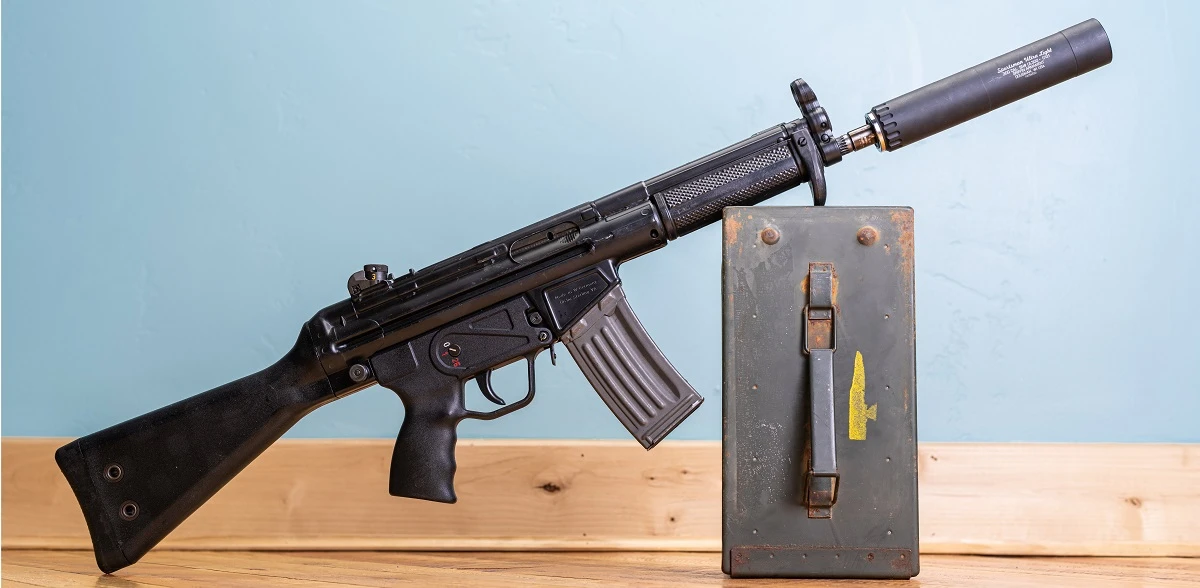

Aluminum Baffles
Aluminum is a very light-weight material that works great in rimfire suppressors. In fact, some of the highest performing and lightest weight .22 suppressors, like the SilencerCo Warlock II (only 3 ounces), are made from aluminum.
Although it works great for .22 LR, it really isn't strong enough to handle pressures from higher-pressure calibers alone. When you get into calibers that have higher pressure - like .22 Mag or .17 HMR and up, if aluminum is being used, you’ll start to see it being mixed with stronger materials.
Even though aluminum baffles are mostly used in rimfire suppressors, you’ll also see it used in larger silencers, but with a twist. For example, theGriffin Sportsman Ultra Light 300 (pictured) features aluminum baffles. The proverbial twist is that on suppressors like the Sportsman UL 300, it also features two stainless steel blast baffles to accommodate for that higher pressure round. As you can imagine, aluminum plays a major role in making this Griffin Armament suppressor ultra light.
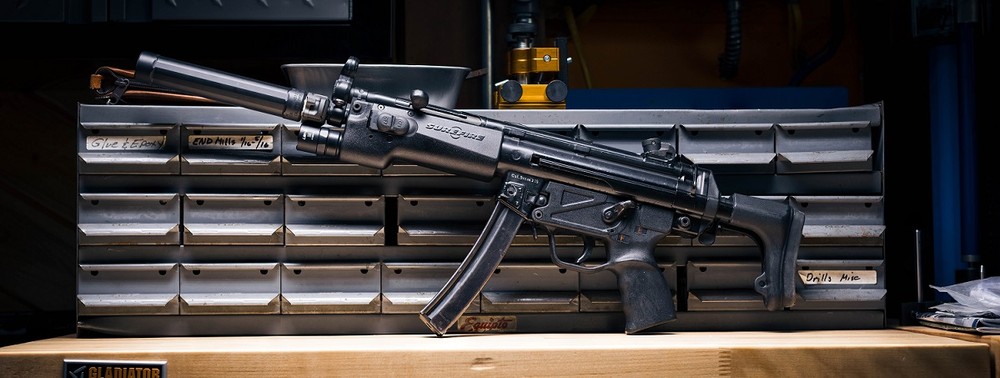

Stainless Steel Baffles
Out of all the silencer baffle materials in all the land, stainless steel is probably the most popular material used. There are, of course, many grades of stainless steel; but, we're going to lump them all together for the purpose of this article.
Stainless steel is durable, corrosion resistant, relatively low cost, handles heat well, and holds up well to harsh chemicals. This makes it extremely versatile when it comes to using it in various suppressors. Stainless steel is ideal for use in everything from high-pressure rimfire suppressors all the way up to some of the large bore suppressors!
There are many great suppressors that are made of stainless steel, so we’ll just stick with a few for now since the list is long. We will say that a lot of stainless steel constructed suppressors feature inconel in the blast baffle. Two great examples of this are the SureFire Ryder 9-MP5 (pictured) and YHM Turbo T2. Although these silencers are vastly different in terms of use and goals, both use the inconel blast baffle with the rest of the baffle stack featuring a stainless steel construction.
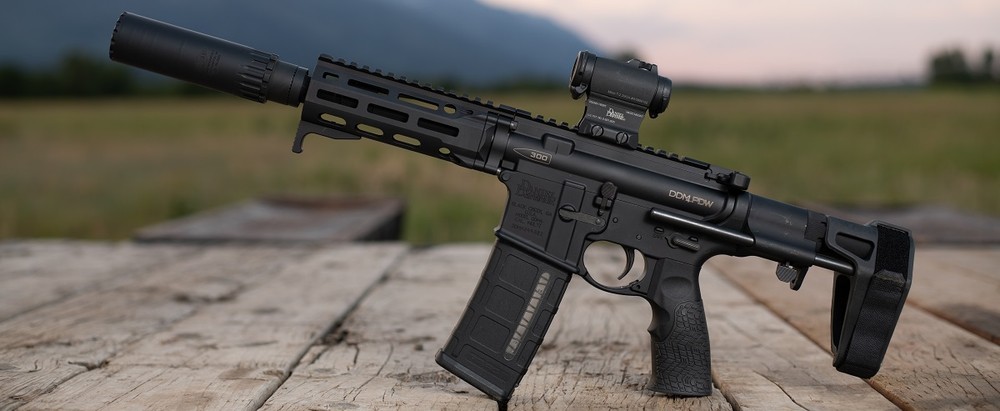

Inconel Baffles
Inconel is an extremely durable alloy that performs very well in suppressor baffles. It can handle extreme abuse and heat, while not being overly heavy. Because it’s such a durable material, it can be harder to work with. You’ll usually see a full baffle stack of inconel used in higher-end suppressors, or an inconel blast baffle in mid-range models.
We might sound like we’re harping on its durability, but suppressors made of inconel baffles can withstand A LOT. These suppressor baffles can generally withstand a full-auto firing schedule and short barrel rifles.
Only a few suppressor models have a baffle stack made entirely of Inconel because of its price point and workability. The CGS Helios QD is one example of a full inconel baffle stack. But a lot more suppressor manufacturers use inconel as the blast baffle, like the YHM Resonator K (pictured) or the SureFire SOCOM556-RC2.
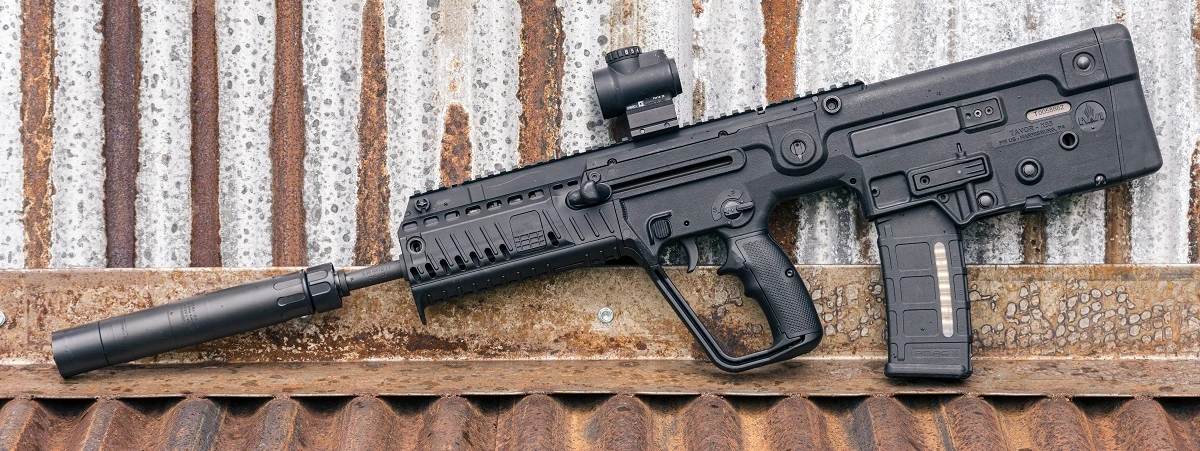

Stellite Baffles
Compared to stainless steel and inconel, stellite is extremely tough and corrosion resistant. Since we’ve already covered stainless steel and inconel, the fact that stellite is even more durable is pretty incredible! But, its durability does come at a cost… stellite is generally more expensive, and more expensive to machine as well.
Due to its resilience, you’ll see suppressors with stellite baffles rated for shorter barrels and higher firing schedules. If you’re looking for a suppressor to attach onto a 12 inch barrel, for example, stellite might be your suppressor baffle material of choice. As we mentioned, stellite can usually handle faster firing schedules, like full auto, too.
The Rugged Surge762 (pictured) is a great example of a suppressor using stellite baffles. It's the Surge762’s stellite baffle construction that plays a large part in allowing it to be belt fed rated with no minimum barrel length restrictions.
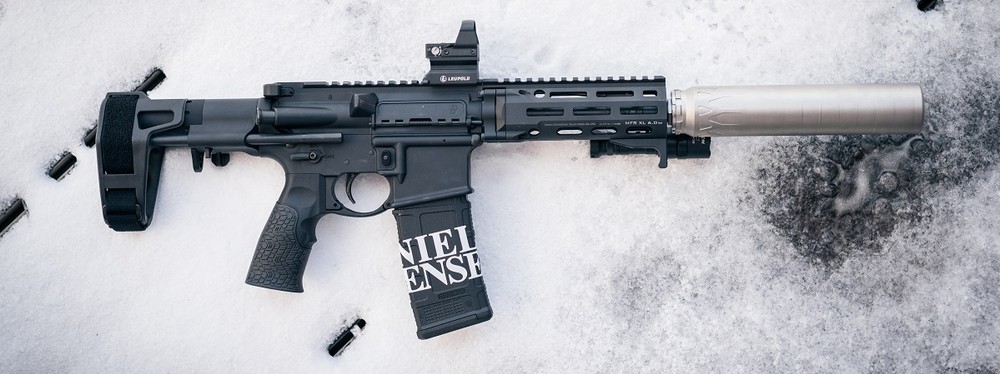

Titanium Baffles
When you’re searching for suppressors where precision and weight are of importance titanium might be your ticket. Titanium is both light-weight and durable. However, it is also fairly expensive and can be susceptible to heat corrosion if you're not careful.
Although some rimfire suppressors use Titanium, the most common use is in the 7.62mm rifle and large bore rifle categories. Where a stainless suppressor can often push close to 2 lbs, titanium suppressors in the same category can weigh a fraction of that.
As with stainless steel, several suppressors use a stronger blast baffle than itself. You will see a lot of titanium suppressors feature an inconel or stainless steel blast baffle, or at least thread mount. This is because it improves the suppressor's durability. A great example of this would be the Dead Air Nomad LT (naked Nomad pictured), which boasts a stainless steel thread mount, giving you more durability, but with all of the weight savings.
Chrome Moly Steel Baffles
Chrome Moly Steel is a cost effective alternative to some of the other steels available. Because of its price point, chrome moly steel is used in some rifle suppressors, particularly of the 5.56mm category.
One thing to be mindful of when you’re using a suppressor made of Chrome Moly Steel is your firing schedule and barrel length (among the other essentials like caliber rating). If you're using a barrel length longer than 14.5" and you have a low firing schedule, then Chrome Moly will work just fine. If, on the other hand, you have a shorter barrel or are a high-volume shooter, a higher grade of steel might fit the bill a little better.
We're seeing chrome moly steel being used less and less as a suppressor baffle material. While it's cost effective, more and more manufacturers are leaning toward more durability as opposed to shaving a few bucks off and possibly using a warranty more.
Unobtanium Baffles
Okay, no not actually Unobtanium! But every now and then new materials come out and we hold our breath in anticipation to see how it performs. We’re all for new and innovative materials that could take the market by storm, and get excited when we hear of these new silencer baffle materials.
Introducing a new baffle material means lots of research and development, and resources, to ensure you, the shooter, are safe shooting these products.
Conclusion
We talk to a lot of shooters who have varying needs. What we have found is that no single material will fit the bill for every user. And that's why there isn't just one suppressor baffle material to rule them all, even within the same suppressor category.
Determining how you plan to use the suppressor will help you decide which silencer baffle materials to look for. For example, if you want a light-weight, effective .22LR suppressor; then aluminum or stainless steel will work just great for most people. If, on the other hand, you're looking for a long-range/precision suppressor for your .338 LM, then you might want to look for a primarily titanium silencer.





